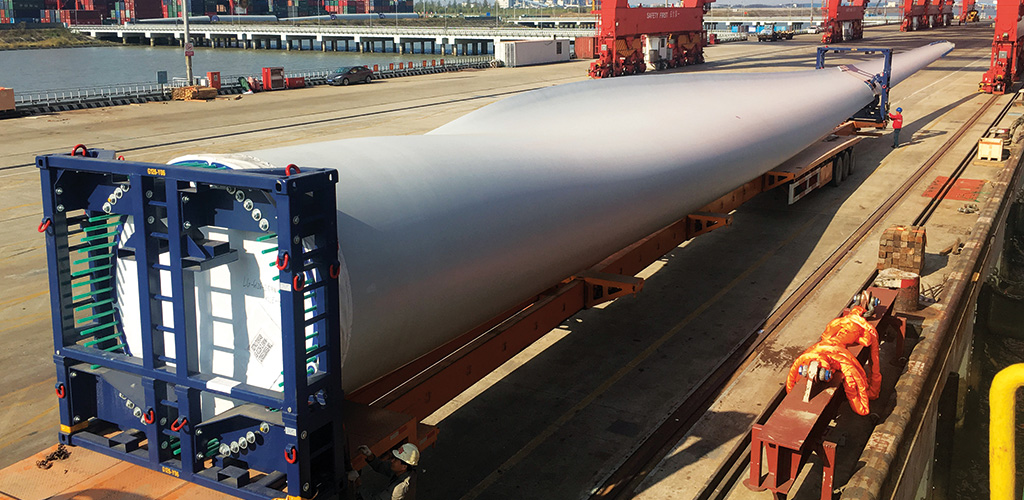Apr 30 | 2021
Asia Powerhouse to Fill Renewables Need

 By Thomas Timlen
By Thomas TimlenRobert Louis Stevenson could not have consciously foreshadowed China’s role in modern Asian geopolitics as he wrote the novella The Strange Case of Dr. Jekyll and Mr. Hyde in 1886, yet the diametrical behaviors currently displayed by China fit the split personality of his fictional tormented character very well.
On one hand we see a nation strengthening its military and staking claims in the South China Sea, while on the other hand we see the same nation joining the world’s largest free-trade agreement with 14 other Asia-Pacific countries who together established the Regional Comprehensive Economic Partnership, while continuing to invest in the region’s infrastructure through the Belt and Road Initiative, or BRI, and providing its neighbors with the means to boost production of renewable energy. Intimidating and benevolent behaviors, often with the former getting all the headlines.
China’s benevolent engagement with its neighbors is driving the development of wind farms throughout the region, providing opportunities for freight forwarders such as Trans Global Projects, or TGP, a company that has been actively engaged in the transport of turbines manufactured in China to Thailand and Vietnam.
TGP’s CEO Colin Charnock is enthusiastic regarding the prospects in the region and globally: “At TGP, it is very important for our customers that our teams understand the intricacies of delivering wind turbines. With our accumulated expertise, we are excited to be playing an increasingly growing role in meeting the need for safe and sustainable energy generation across the globe.”
In Disputed Waters
However, the road that led to these new opportunities was not an easy one. China continues its efforts to elbow its neighbors away from potential exploration of energy resources below the waters of the South China Sea by taking a wide variety of steps to enforce a disputed boundary as defined by an ancient nine-dash-line. This keeps members of the Association of Southeast Asian Nations, or ASEAN, busy. Among other things, the development of a code of conduct aimed at reducing the risk of confrontation on these waters has been in the works for years, while there are no signs that tensions relating to territorial disputes are easing.
The most recent example involved more than 200 Chinese fishing vessels that positioned themselves within the Philippines’ exclusive economic zone. In March the Philippines foreign ministry issued a diplomatic protest claiming that the vessels were infringing on the country’s sovereignty and generating instability, while the Philippines defense secretary described their presence as a provocative action that is militarizing the area.
Many see the vessels as part of China’s maritime militia, whereas China counters such accusations by claiming that the fishing vessels are merely seeking shelter from rough seas.
The Philippines is joined by other countries that have territorial disputes with China, including Indonesia, Brunei, Japan, Malaysia and Vietnam. The Chinese Coast Guard has subsequently continued to patrol the contested waters.
Last year, while TGP was still negotiating its latest contract to bring Chinese-manufactured turbines to Vietnam, a British contractor cancelled an offshore project arranged with Vietnam amid rumors that it came under pressure from Beijing to back out of the deal.
Yet China is supporting Vietnam’s efforts to expand its capacity to develop renewable energy sources with China well underway with a project to develop offshore wind turbine farms off Vietnam’s coast.
Although the project was pursued throughout last year and operations commenced in September, it was first announced in February 2021. The TGP contract secured with an engineering, procurement and construction contractor in China involves the transport of about 320,000 freight tons of wind turbine components to be used for two offshore wind farm projects in Vietnam.
Chinese turbine manufacturer Goldwind is also providing units for Vietnam’s Binh Dai offshore wind project, joined by another Chinese firm, Orient Cable, who is providing and installing 185 kilometers of 35 kV subsea cable system, its first foray into the Vietnamese energy market.
Infrastructure Demands
China’s investments and direct involvement in infrastructure projects are well known, both domestically and regionally, as part of the BRI. Such investments have helped to allay many logistics challenges for the movement of large turbine components from China to Vietnam, a country known for its infrastructure inadequacies and where many logistics challenges remain.
To TGP’s advantage, valuable experience was gained from a similar project involving the transport of turbines from China to Thailand last year. Six 2.5-megawatt turbines produced in Tianjin and Taicang were contracted for delivery at Laem Chabang. Among the challenges involved were the bulky and fragile nature of the turbine parts. Any components arriving damaged or scratched would have to be returned to the Chinese workshop for repairs. There were also administrative burdens. Two types of customs clearance were required in China; one for the permanent export of the turbines and one for the temporary export of reusable transport saddles.
With the transportation of multiple large-scale turbines typically involving many repetitions of single-set activities, TGP synchronized activities to provide the solution. It arranged to simultaneously load two sea charters: one with the turbines’ nacelles and hubs and one with the load towers and blades. While time was of the essence, the cargo’s safety was just as important, and precise plans were devised for its stowage on board while documentation was carefully coordinated for the dual customs clearance in China. This led the six turbines to be delivered at Laem Chabang safely and on time.
Under the latest contract, between September 2020 and September 2021, TGP is scheduled to deliver 10 batches of wind turbine equipment from China to Vietnam via ocean vessel. The ongoing contract sees TGP loading, shipping, providing customs clearance and discharging 57 sets of 3-megawatt offshore wind turbines. Each set includes towers and blades as well as the hubs, nacelles and generators. The blades measure more than 76 meters, requiring careful loading, stowage and offloading.
Since September, TGP has delivered 12 sets of wind turbine equipment from three different locations across China to the port of Ho Chi Minh in Vietnam. “Shipment of a wind turbine’s oversized components, the blades, towers and nacelles, requires heavy lifting expertise and meticulous transport planning,” Charnock said. “Led by our team in China, this project highlights the trust we have built with key players in the renewables sector. We look forward to continuing to utilize our knowledge in the end-to-end handling of breakbulk cargo to meet the needs of a sector that’s expected to expand significantly in the coming years.”
Asia-Pacific Wind Potential
Fanned on by the environmental, economic and political necessity of renewable yet reliable power sources, demand for wind turbines in the Asia-Pacific is growing rapidly. TGP projects that by 2030 the region will become the world’s largest offshore wind power market. In previous years, TGP has supported a number of wind energy projects across Asia, and moving into the future, the company plans to further hone its expertise in this area.
Chinese turbine producers like Goldwind that have met domestic demand are increasingly looking to exports to Thailand and Vietnam, as well as other markets along the BRI network. Key manufacturers such as Goldwind have exported to buyers in Kazakhstan, Pakistan, Greece and Turkey, orders that drive continued demand for project cargo transportation. As a global trend continues in which offshore wind farm development takes precedence over onshore wind farms, the additional complexities of offshore farms will create continued opportunities for the companies that can provide the required services and expertise.
While Asian territorial disputes continue to get a lot of attention, trade in the region continues unabated.
Chinese-produced wind turbines and equipment are being installed for the energy grids of Indonesia, Japan, the Philippines and Vietnam despite the border issues. China’s industrial shipments continue to run parallel to large volumes of Chinese consumer goods traded regionally and globally, while the region’s continued trade volumes are positioned to benefit from the new Regional Comprehensive Economic Partnership.
TGP’s activities in Thailand and Vietnam reflect a broader trend in which Chinese equipment is well positioned to support transitions to renewable energy sources, which can be expected to be a continued driver for project and heavy-lift transport demand, even if China’s Jekyll and Hyde behaviors stubbornly persist.
Thomas Timlen is a Singapore-based analyst, researcher, writer and spokesperson with 31 years of experience addressing the regulatory and operational issues that impact all sectors of the maritime industry.
Image credit: Trans Global Projects


